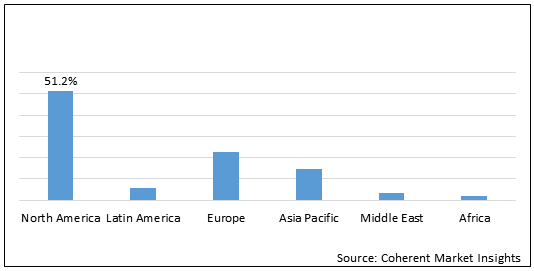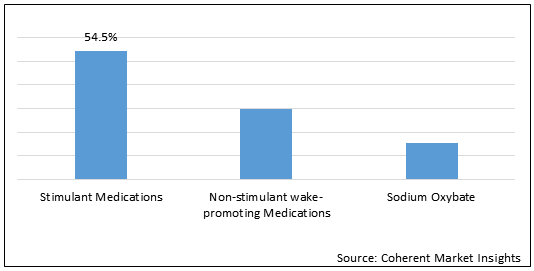Idiopathic hypersomnia (IH) is a rare sleep disorder marked by an over sleeping duration time during the day even after a longer sleeping hours of night sleep. People with idiopathic hypersomnia sleep normal or for long hours each night but still feel excessively sleepy during the day. Idiopathic hypersomnia is a type of hypersomnia and symptoms include chronic excessive daytime sleepiness (EDS), non-refreshing daytime napping, sleep drunkenness after nighttime sleep, naps, and others. Idiopathic hypersomnia is a nervous system disease, whose cause is not known. There is no single drug available that is approved by the U.S. FDA for this disease, but medicines such as dextroamphetamine that are approved for narcolepsy, one of the types of hypersomnia can be used for idiopathic hypersomnia off-label.
The global idiopathic hypersomnia treatment market is estimated to be valued at US$ 242.4 million in 2020 and is expected to exhibit a CAGR of 8.7% over the forecast period (2020-2027).
Figure 1. Global Idiopathic Hypersomnia Treatment Market Share (%) in Terms of Value, By Region, 2020

To learn more about this report, Download Free Sample
Increase in lifestyle diseases such as anxiety, depression, and increasing diagnosis rate of hypersomnia are expected to drive the market growth over the forecast period
Growing incidence of lifestyle diseases such as anxiety, depression, etc. caused by behavioral changes, social activities, which affects the sleep cycle is the major factor responsible for growth of the global idiopathic hypersomnia treatment market. These changes lead to anxiety, depression, & other health issues, in which patients feel tired during the daytime and are more prone to hypersomnia. For instance, according to the Anxiety and Depression Association of America, anxiety disorders are the most common mental illness in the U.S., affecting 40 million adults in the U.S. of age 18 and older, or 18.1% of the population every year.
Furthermore, increasing diagnosis rate of hypersomnia coupled with technological advancements for diagnosis of hypersomnia are expected to fuel growth of the global idiopathic hypersomnia treatment market. For instance, multiple sleep latency test (MSLT) is the standard tool used to diagnose narcolepsy and idiopathic hypersomnia, which is offered at AASM-accredited sleep centers in the U.S.
Idiopathic Hypersomnia Treatment Market Report Coverage
| Report Coverage | Details | ||
|---|---|---|---|
| Base Year: | 2019 | Market Size in 2019: | US$ 242.4 Mn |
| Historical Data for: | 2016 to 2019 | Forecast Period: | 2020 to 2027 |
| Forecast Period 2020 to 2027 CAGR: | 8.7% | 2027 Value Projection: | US$ 429.0 Mn |
| Geographies covered: |
|
||
| Segments covered: |
|
||
| Companies covered: |
Takeda Pharmaceutical Company Limited, Teva Pharmaceutical Industries Ltd., Jazz Pharmaceuticals, Inc., BIOPROJET, Avadel Pharmaceuticals, Plc. GlaxoSmithKline plc, Pfizer Inc., Theranexus, Fisher & Paykel Healthcare Limited, Drive DeVilbiss Healthcare LLC, and Merck & Co. Inc. |
||
| Growth Drivers: |
|
||
| Restraints & Challenges: |
|
||
Uncover macros and micros vetted on 75+ parameters: Get instant access to report
Figure 2. Global Idiopathic Hypersomnia Treatment Market Share (%), by Drug Class, 2020

To learn more about this report, Download Free Sample
Increasing number of pipeline products is expected to drive the market growth over the forecast period
Rising number of pipeline products for idiopathic hypersomnia treatment is also a major factor that is expected to boost growth of the global idiopathic hypersomnia treatment market. For instance, in January 2020, Millennium Pharmaceuticals, Inc., a subsidiary of Takeda Pharmaceutical Company Limited initiated the phase1 study of a single intravenous infusion dose of TAK-925 in participants with idiopathic hypersomnia.
Global Idiopathic Hypersomnia Treatment – Impact of Coronavirus (Covid-19) Pandemic
Since the COVID-19 virus outbreak in December 2019, the disease has spread to over 100 countries across the globe and the World Health Organization declared it a public health emergency. According to the World Health Organization’s report, the manifestation of coronavirus disease (COVID-19) has resulted in over 45 million infected individuals worldwide as of October 30, 2020. Due to the increasing prevalence of COVID-19, key players operating in the idiopathic hypersomnia treatment market are focusing on research and development of novel products to support and combat the effect of COVID-19. COVID-19 pandemic has impacted the global economy and in turn, the idiopathic hypersomnia treatment market. Quarantines, traveling constraints, and social distancing measures are likely to lead to a steep decline in business and consumer spending until the end of the third quarter of 2020
Global Idiopathic Hypersomnia Treatment Market - Restraint
Side effects of current off-label drugs for hypersomnia which include aggressive behavior & dependence and no approved product are some of the major factors that are expected to hinder growth of the global idiopathic hypersomnia treatment market. Moreover, declining less patient pool for clinical trials is also a major setback for the global idiopathic hypersomnia treatment market, which is expected to hamper growth of the market.
Key Players
Major players operating in the global idiopathic hypersomnia treatment market include Takeda Pharmaceutical Company Limited, Teva Pharmaceutical Industries Ltd., Jazz Pharmaceuticals, Inc., BIOPROJET, Avadel Pharmaceuticals, Plc. GlaxoSmithKline plc, Pfizer Inc., Theranexus, Fisher & Paykel Healthcare Limited, Drive DeVilbiss Healthcare LLC, and Merck & Co. Inc.
Share
Share
Missing comfort of reading report in your local language? Find your preferred language :
Transform your Strategy with Exclusive Trending Reports :
Frequently Asked Questions
Select a License Type
Joining thousands of companies around the world committed to making the Excellent Business Solutions.
View All Our Clients